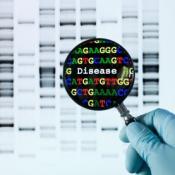Human Molecular Genetics and Genomics — Important Advances and Exciting Possibilities
By Francis S. Collins, M.D., Ph.D., Jennifer A. Doudna, Ph.D., Eric S. Lander, Ph.D., and Charles N. Rotimi, Ph.D.,
The New England Journal of Medicine
| 01. 07. 2021
The breathtaking progress in molecular genetics that has occurred over the past five decades and the transition to genomic medicine would have been difficult to imagine in 1970, when the Institute of Medicine (IOM), now the National Academy of Medicine (NAM), was formed. The term “genomics” hadn’t yet been coined, the tools and technologies that are the foundation of modern biotechnology were in their infancy, and methods for sequencing even a few nucleotides were barely workable.1
The IOM’s early years coincided with paradigm-shifting discoveries related to DNA, as biologic research swiftly incorporated Boyer and Cohen’s recombinant method, Sanger’s DNA-sequencing work, and Mullis’s introduction of polymerase chain reaction (PCR) technology (see timeline). Yet even against this backdrop, the notion of a “big science” endeavor to sequence the human genome seemed radical.
In 1987, the New York Times Magazine characterized the Human Genome Project as the “biggest, costliest, most provocative biomedical research project in history.”2 But in the years between the project’s launch in 1990 and its completion in 2003, genomic technology advanced dramatically. DNA-sequencing throughput increased from 1000...
Related Articles
By Jonathan Matthews, GMWatch | 12.11.2025
In our first article in this series, we investigated the dark PR tactics that have accompanied Colossal Bioscience’s de-extinction disinformation campaign, in which transgenic cloned grey wolves have been showcased to the world as resurrected dire wolves – a...
By Jenny Lange, BioNews | 12.01.2025
A UK toddler with a rare genetic condition was the first person to receive a new gene therapy that appears to halt disease progression.
Oliver, now three years old, has Hunter syndrome, an inherited genetic disorder that leads to physical...
By Simar Bajaj, The New York Times | 11.27.2025
A common cold was enough to kill Cora Oakley.
Born in Morristown, N.J., with virtually no immune system, Cora was diagnosed with severe combined immunodeficiency, a rare genetic condition that leaves the body without key white blood cells.
It’s better...
By Rachel Hall, The Guardian | 11.30.2025
Couples are needlessly going through IVF because male infertility is under-researched, with the NHS too often failing to diagnose treatable causes, leading experts have said.
Poor understanding among GPs and a lack of specialists and NHS testing means male infertility...




